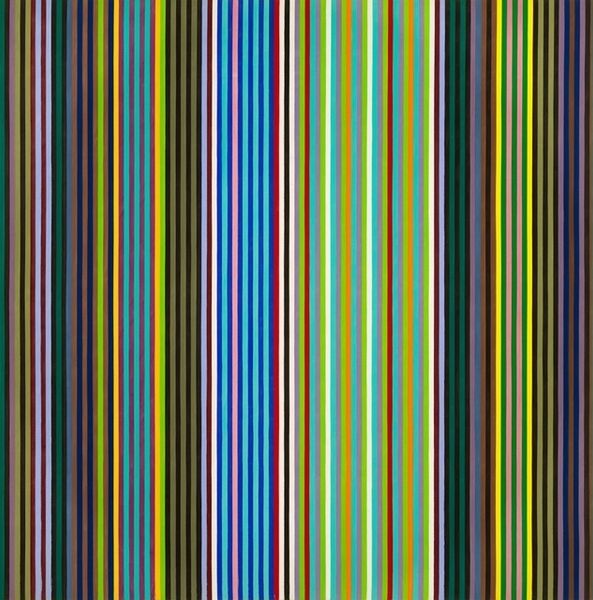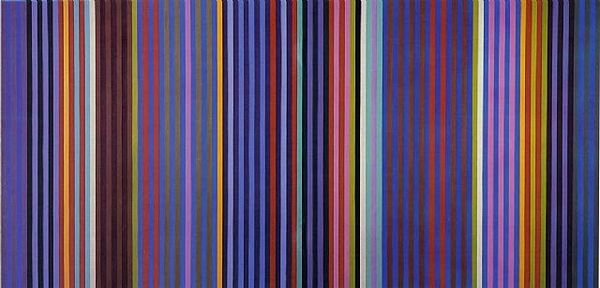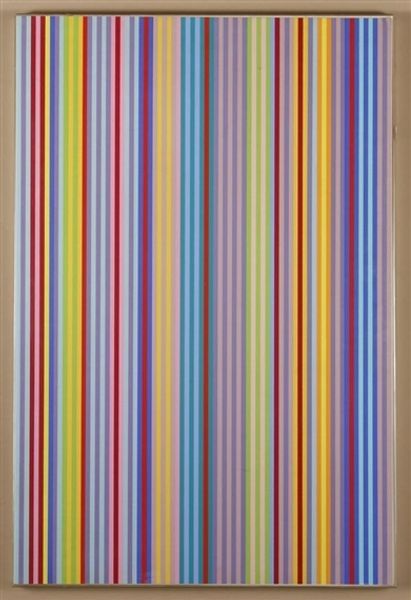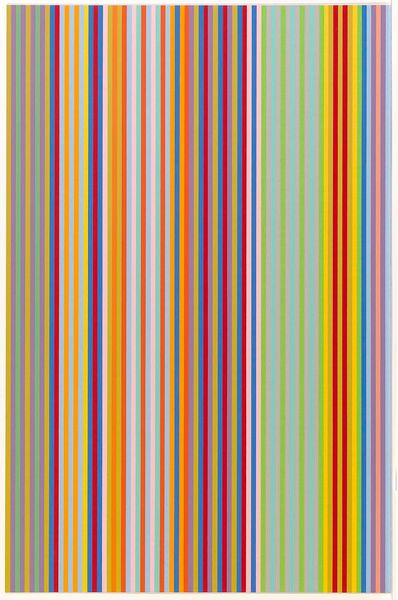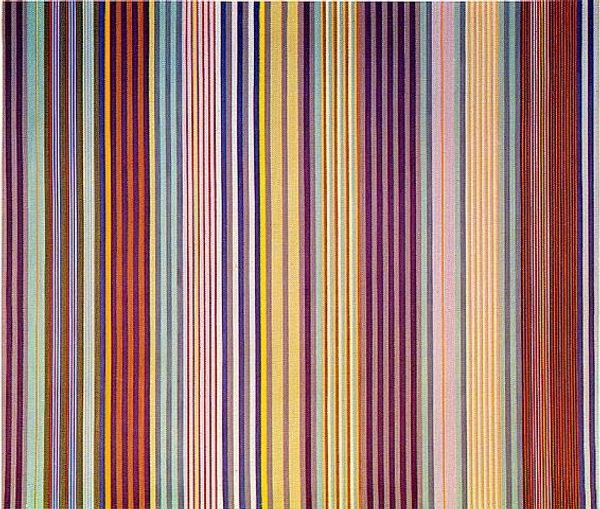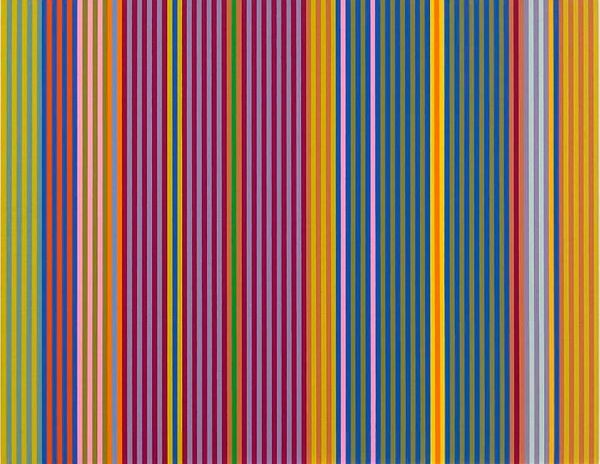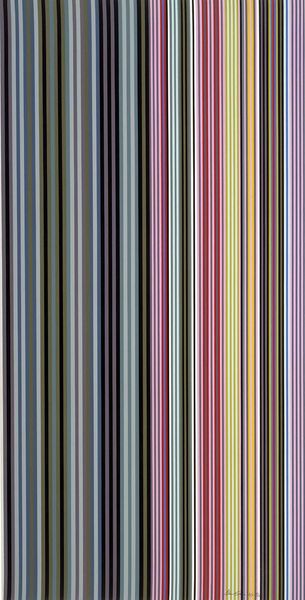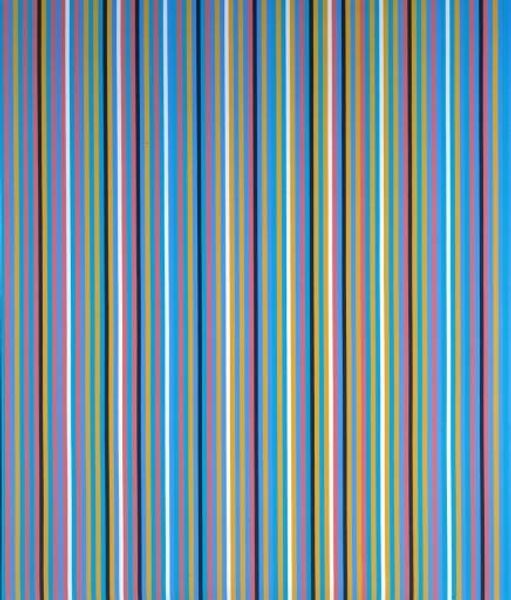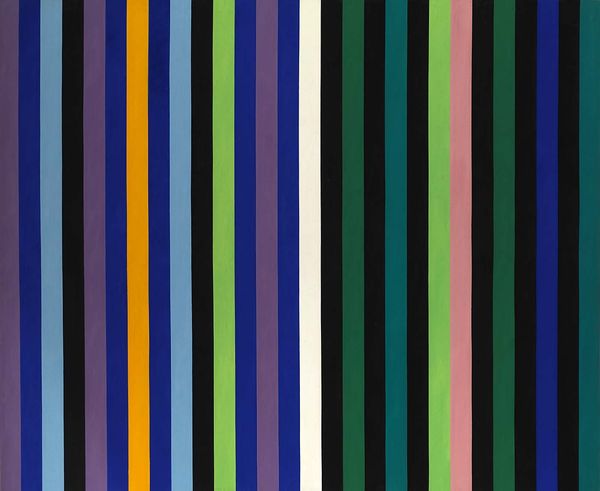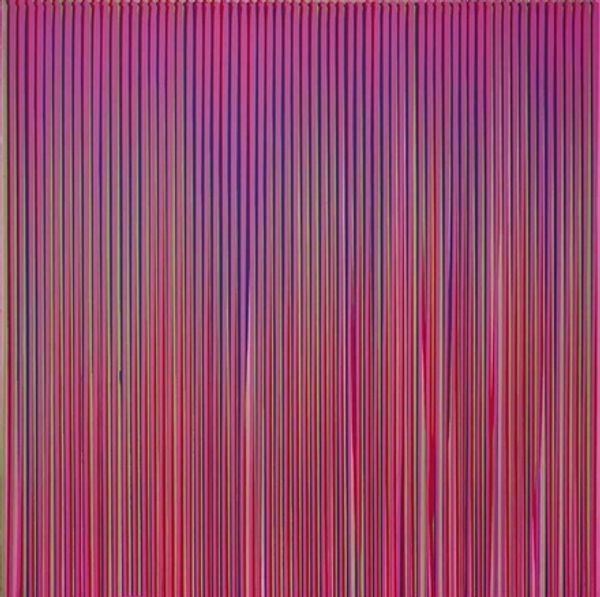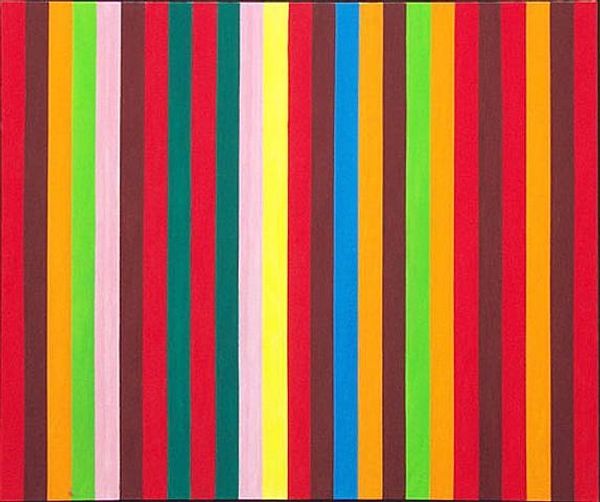
painting, acrylic-paint, ink
#
painting
#
pattern
#
colour-field-painting
#
acrylic-paint
#
geometric pattern
#
ink
#
abstract pattern
#
geometric
#
geometric-abstraction
#
abstraction
#
pop-art
#
line
#
modernism
#
hard-edge-painting
Dimensions: 279.4 x 553.72 cm
Copyright: Gene Davis,Fair Use
Editor: This is Gene Davis's "Dr. Peppercorn," created in 1967 using acrylic paint and, I believe, ink. What strikes me are the repetitive lines, the pure color and how the painting seems to vibrate. What's your take on it? Curator: I see this as an excellent example of the exploration of materials and processes prevalent in the 1960s. Consider the acrylic paint. It allowed Davis to achieve those intense, flat colors and sharp lines, moving away from the perceived "painterly" textures of oil. It's a shift in material driven by industrial chemistry, impacting the very aesthetic. Do you think this choice of material contributes to its "vibrating" effect? Editor: Absolutely. There's a precision that almost feels manufactured, in a good way, especially since Davis seems to abandon brushwork altogether. So how does the means of production influence the way we look at abstract art in this era? Curator: Well, the lack of visible brushstrokes democratizes the artwork somewhat, it is like industrial production but done by hand. The painting moves toward an object. In terms of social context, we have the rise of mass production, Pop Art blurring lines between high and low culture. Davis takes that ethos, but channels it through pure abstraction. How might his title "Dr. Peppercorn," a soft drink reference, reflect these influences? Editor: It highlights that connection, doesn't it? Referencing popular consumer culture. So he elevates commercial materials and processes within a fine art context, disrupting traditional hierarchies. Curator: Exactly! By focusing on color and material as content, rather than representation, he compels us to reconsider where value lies in art making. Have your perceptions shifted after thinking about the materials in the work? Editor: I think so! I am so used to looking for a deep meaning in abstract paintings, and did not really consider the artist's intentions concerning materials! Thanks, this was eye-opening!
Comments
No comments
Be the first to comment and join the conversation on the ultimate creative platform.
